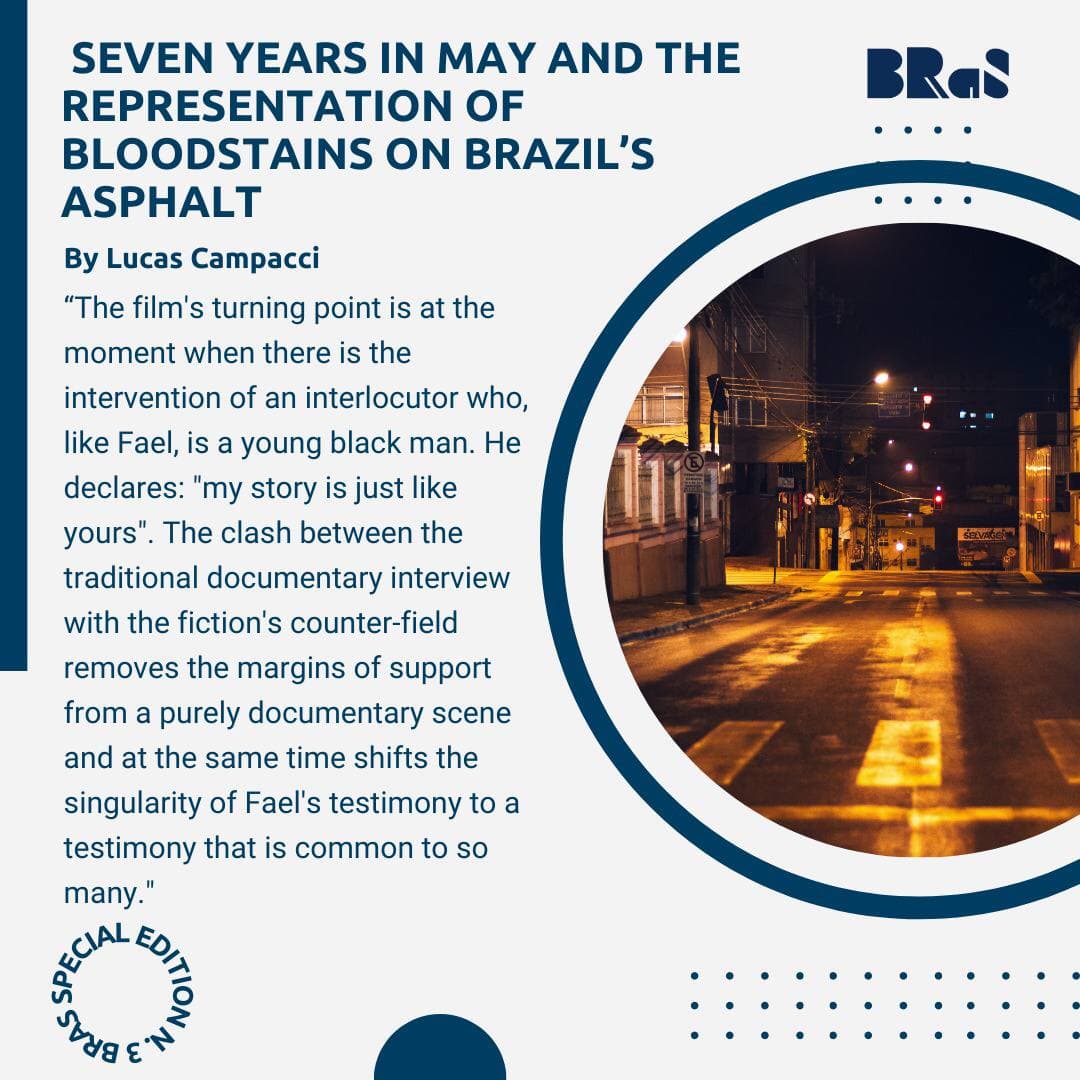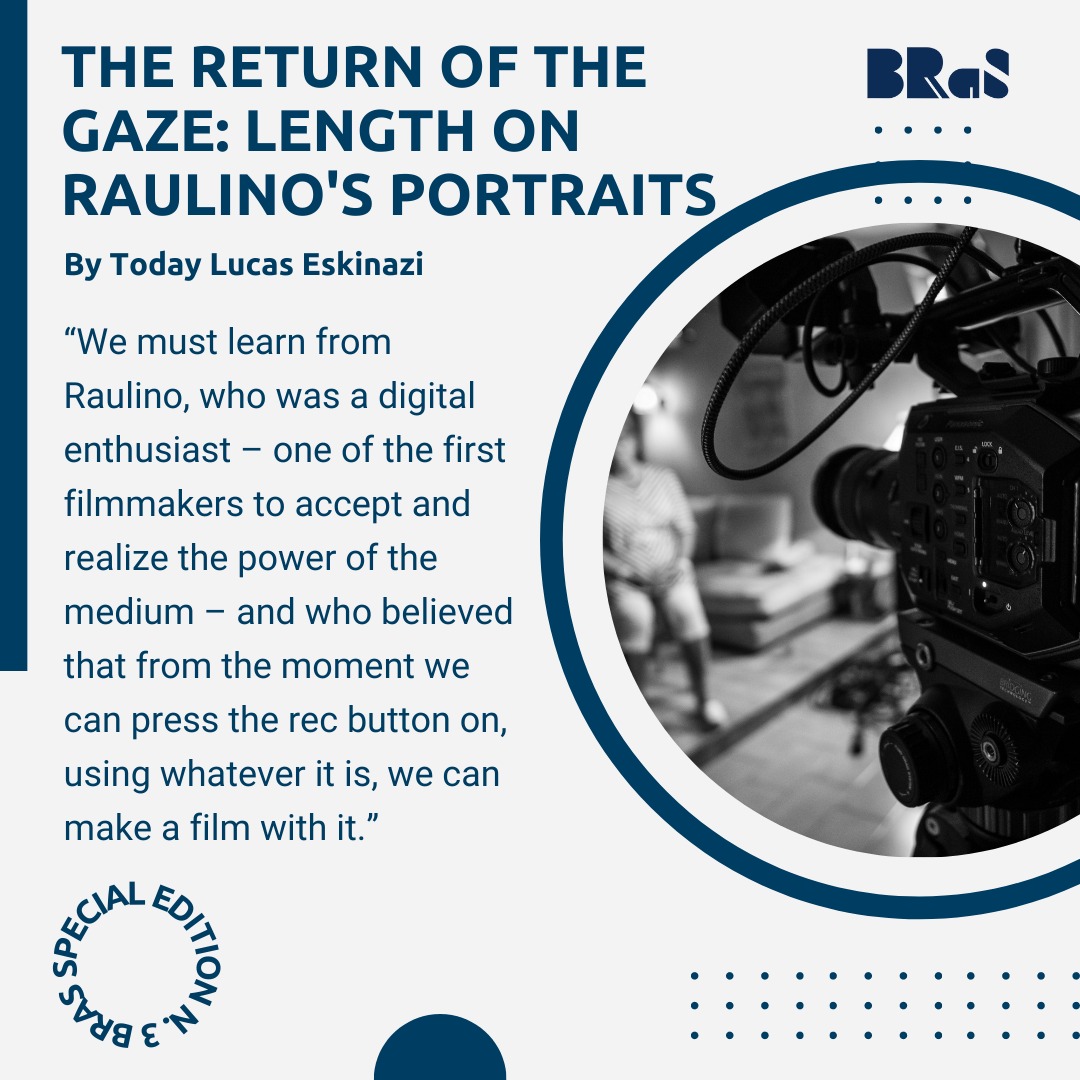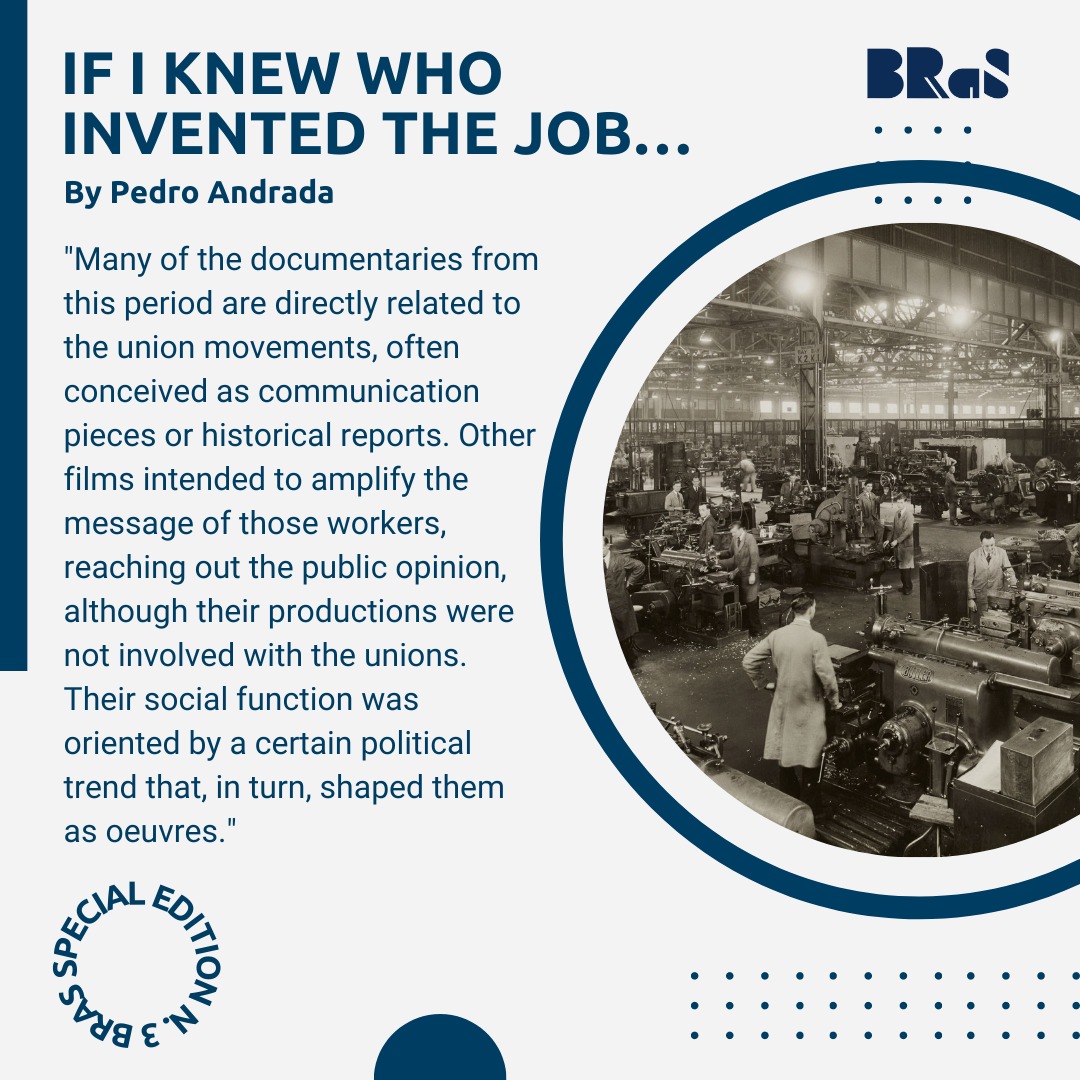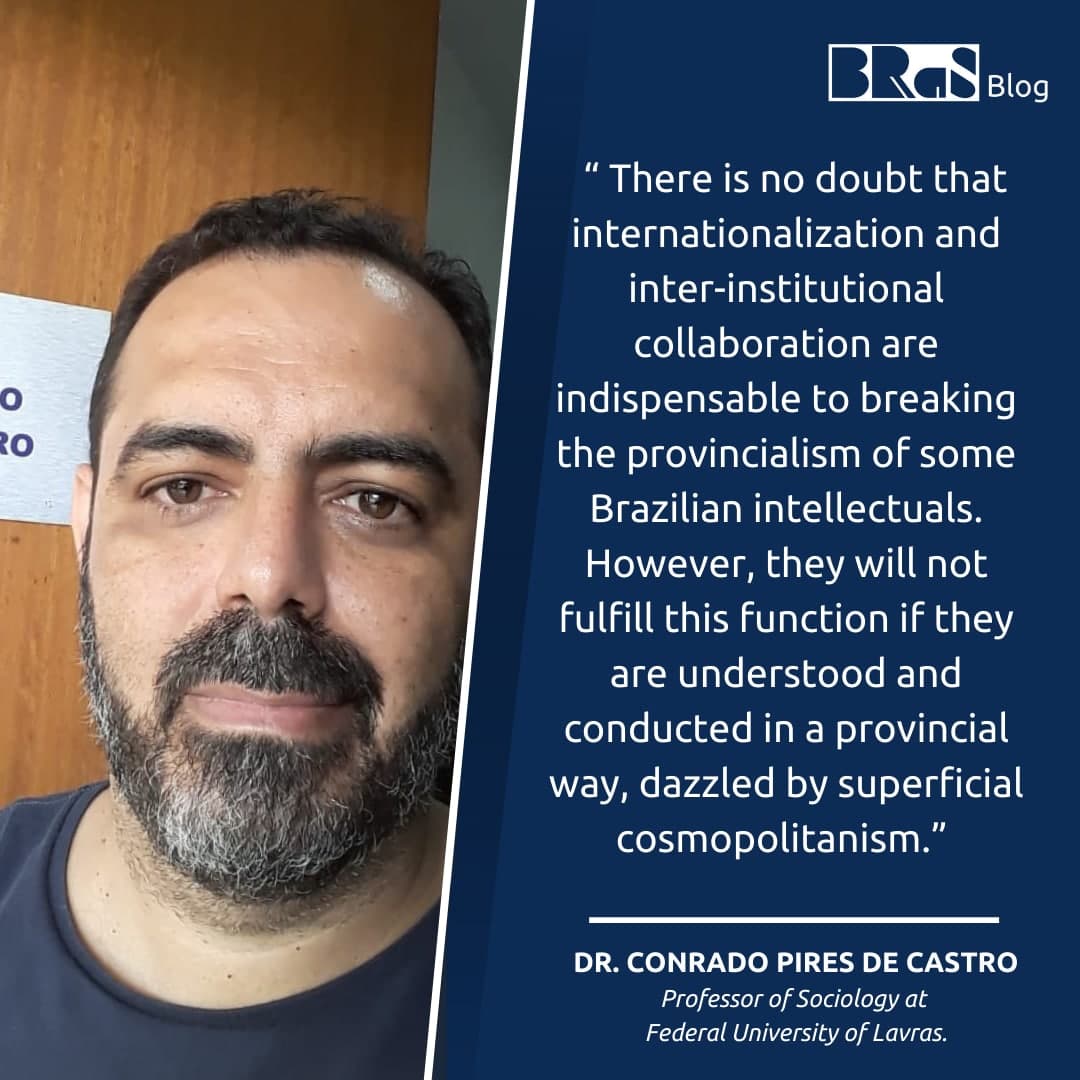As a research and studies center, BRaS aims at promoting and supporting collaborative works. On our Special Edition (SE) No. 3, Dr. Elcio Basilio presents us with an overview of the Brazilian cinema over the years and invites 4 researchers to join him in this mission. From a historical approach to contemporary issues, the articles will make us look at Brazil through the cinema lenses.
A special thanks to Dr. Elcio Basilio and Anna Paula Bennech.
We hope you all enjoy the reading!
Giovanna Imbernon
by Elcio Basilio*
Edited and reviewed by Anna Paula Bennech and Giovanna Imbernon
Organized by Elcio Basilio
As many of you may have heard or even read in the article “The Fire at the Cinema Brasileira: a premeditated chronicle,” published on this website last August, on July 29, 2021, one of the Brazilian Cinematheque’s depots caught fire. It is well known that old nitrate films are highly inflammable, and this event could be just an unfortunate disaster, except for the fact that the year before, the Brazilian Cinematheque was closed, and most of the crew fired. The federal government supposedly intended to transfer the headquarters from São Paulo to Brasilia. Still, the fact is that nothing has been done so far, and the presence of the Cinematheque’s staff could have prevented the fire, as it has happened many times before.
Since 2013, most of the Cinemateca Brasileira funding had already been cut down, and a considerable part of its employees lost their jobs. In 2016, it caught fire and the building was renovated using only private funds, without any public investment. Last July’s incident is not the only cultural disaster that has happened recently in Brazil. In January 2018, the National Museum in Rio de Janeiro was devastated by the fire. Almost the entire building was damaged and more than 90% of its 20-million-item archive was destroyed. And, once again, a disaster could have been prevented, taking into account that, for years, many reports pointed out serious electrical problems in the building. However, it seems like holding one of the world’s largest collections of natural history and anthropological artifacts was not worth a renovation that could have saved all that treasure from the fire.
The circumstances of those incidents make clear that it was not a tragedy nor an accident. Instead, it is the Brazilian government and the neglect of its cultural institutions the real responsible for all these misfortunes. And why is that? Is Brazil so broke that the world’s 13th biggest economy cannot afford to pay for its cultural treasures? Or is there a purpose in such negligence?
One of Bolsonaro’s most ambitious ideological goals is to rewrite our history. For example, to persuade the population that the military regime we had between 1964-1985 was not a dictatorship, but a fair government, which kept us free from a supposed communist threat. The president and some of his supporters even deny the existence of torture under this period, despite numerous reports and the 400 confirmed cases of political assassination.
Against all these facts, how could they rewrite History? There are many strategies, and the new wave of fascism worldwide has shown the possibility of creating a strong net by direct means of communications, such as WhatsApp, where instant messages between people give the illusion of sincerity – information unbiased by the corrupt media. Of course, it is only an illusion. It has already been unveiled that powerful people can disguise their political interest and disseminate their ideas through personal groups on a large scale and use regular people almost as their political pamphleteers.
Another strategy of this fascist agenda is to rewrite books, especially school books, with the intention of teaching kids “facts” that diverge from most experts. And this perverse project does not only intend to erase what has already been written but also prevent cultural and intellectual productions that go against their version of history. That is the reason for the strategic dismantlement of scientific funds in areas such as sociology, anthropology, history, and social sciences in general. It is no wonder that our audiovisual sector was included in the shortage list because, for decades, Brazilian Cinema has been recognized for its tradition of social denunciation. From the Palme d’Or winner Keeper of Promises (1962) to City of God (2002), passing through Entranced Earth (1967) and Pixote (1980), Brazil’s social inequalities have been represented and denounced on the big screen.
Therefore, after two months of this insulting and predictable fire, we are here to celebrate Brazilian cinema and fight for its memory. During the next few weeks, five articles will be published to give a glimpse of Brazilian film history and critical thinking. Opening this special edition, “A hero without a character” analyses one of Brazil’s most iconic literary and cinematic heroes: Macunaíma, the infamous main character of Mario de Andrade’s novel (1928) and Joaquim Pedro de Andrade’s homonymous movie (1969). The article points out the similarities between the movie’s unethical character and other antiheroes from the 60’s new wave cinema. It also reveals which modern aspects could be already perceived in the book and how the movie was able to renew the oral narrative roots of the story as the actors gave voice to the characters and their outstanding sayings.
In the second article of this special edition, Pedro Andrada will talk about The man that was turned into juice (1980), leading a discussion about the representation of factory workers and the overcoming of the dichotomy between the alienated standard worker and the class-conscious revolutionary proletarian. The discussion will go through the idea of the refusal to work, the hate towards the boss, and the working class’ conditions during the turbulent period of big strikes in Brazil’s biggest industrial area.
The man that was turned into juice was directed by João Batista de Andrade and cinematographed by Aloysio Raulino, one of Brazil’s most notorious directors of photography, who has also worked as a movie director.
In the third article, his short movies from the ’70s will be presented by Lucas Eskinazi. In The Return of the Gaze: Length on Raulino’s portraits, Eskinazi will comment on Raulino’s approach to passersby while shooting his street portraits. Further in the text, he discusses what we can learn from these independent documentaries nowadays. As we previously stated, Brazil’s Cinema Funds are suffering a critical shortage, and whether we are forced to or not, Raulino’s handmade productions seem more than ever as a viable option, showing us possibilities that go beyond the terms of industrial cinema.
Next, Fernanda Sales Rocha Santos’ article Dazed Flesh and spaces of possibility investigates how Grace Passô and Ricardo Alves Jr.’s movie problematizes the insertion of the black body on screen, and how the actress and director Grace Passô gives voice to her body – a black woman’s body –, in fact, multiple and sometimes conflictual voices and discourses that inhabit her. A war of speeches amidst the difficulty of having a “come-to-be identity of gender and race” compounds this battle that dwells in the actress’s body.
Closing the special edition, in our last article, Lucas Campacci will talk about Seven years in May (2019), a film that has been released in movie theaters together with Dazed Flesh in a distribution strategy, considering that both movies run around 40 minutes. Campacci discusses the different types of representation of trauma in the movie: through self-representation, documentary testimony, and by the allegorical and collective sense of the trauma.
Whether through our classics or introducing some interesting examples of our most recent production, the main purpose of this special edition is to instigate foreign readers to get to know better Brazilian cinema. With the pandemic and the diminishing of the federal incentive, our current prospects are not really promising, but the situation can be once again reversed, and together we shall hope and fight for Brazilian cinema to continue to give us more exciting features.
Unfortunately, while writing these articles, we lost two of our greatest actors, so we would like to dedicate these texts to the loving memory of Paulo José and Tarcísio Meira.
References
Calil, Carlos Augusto. “Com 5 incêndios e desprezo do poder público, história da Cinemateca virou pesadelo kafkiano.” Folha de São Paulo, August 7, 2021. https://www1.folha.uol.com.br/ilustrissima/2021/08/com-5-incendios-e-desprezo-do-poder-publico-historia-da-cinemateca-virou-pesadelo-kafkiano.shtml
* Elcio Basilio is a Postdoctoral researcher in Communication and Semiotics at the Pontifical Catholic University of São Paulo (PUC-SP) with a work about Antonioni’s “Incommunicability Trilogy.” In 2020, he defended his doctoral thesis entitled “A palavra e sua ausência,” an analysis of the use of speech and silence in the cinema of Philippe Garrel. His research often relates art cinema with literature and philosophy, and he also works as a filmmaker.








